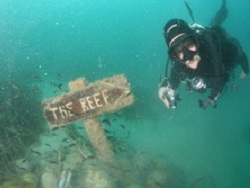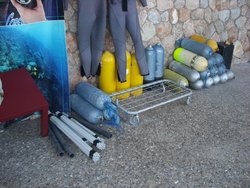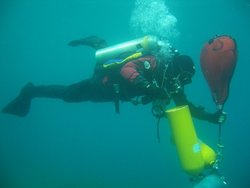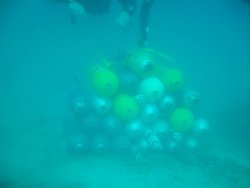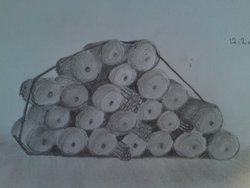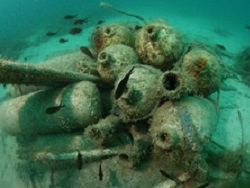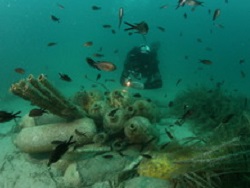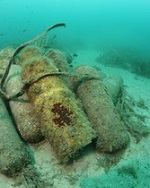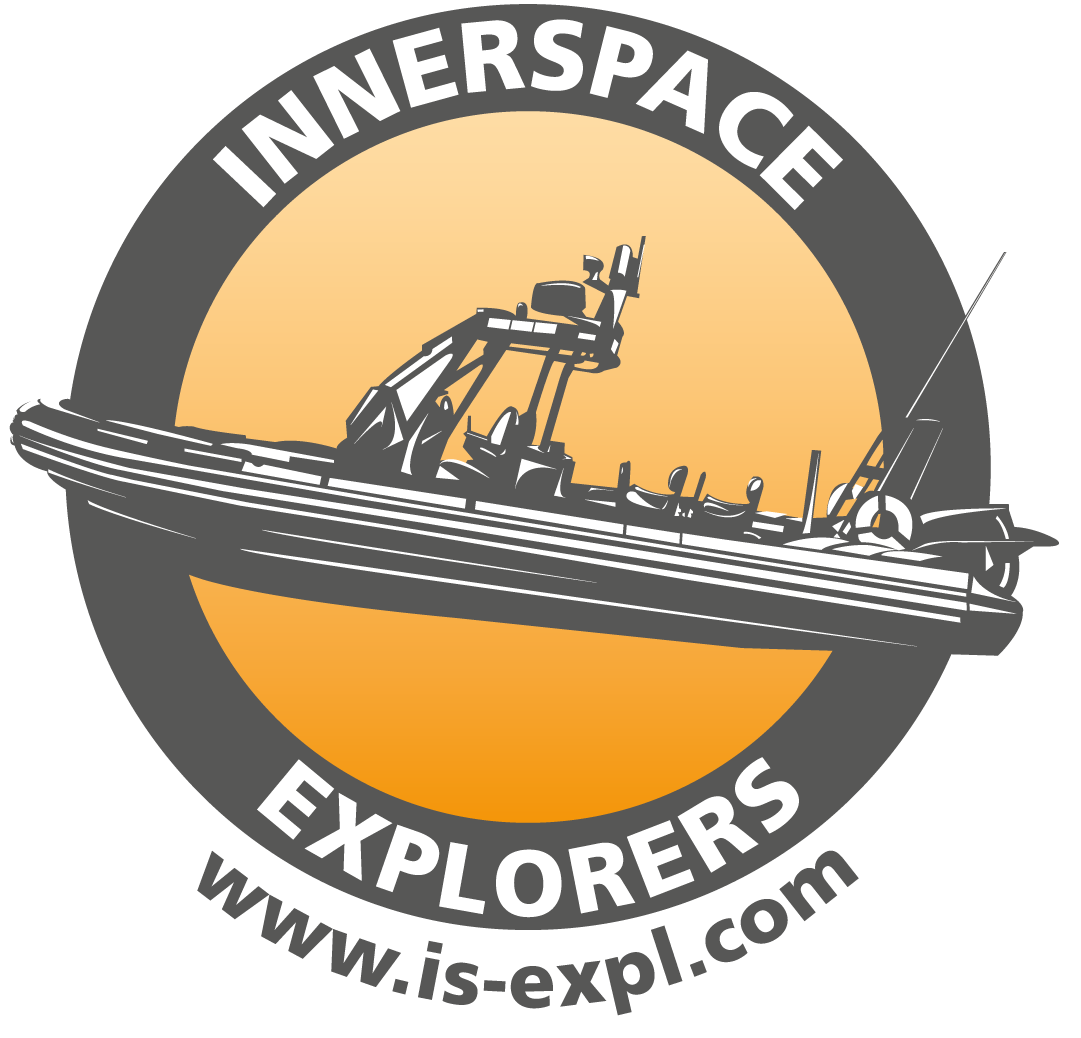The Reef
..it always comes back to the definition of exploration. I´m sure that one or another will not see in the first place what the exploration part in this one is - but it is..
In July 2009 while teaching in Mallorca, Olivier Borgognon introduced the plan of creating an artificial reef on a sandy patch off his divecenter in Illetas / Malloca. [preview] The Material for the buildup were old divetanks and some piping. The materials were suitable as they are no hazard to the enviroment, have a good history as artificial reefs (wrecks) and will not detorate too fast. The round shape with the cavernous inside create a lot of surfce for life to settle and to hide.
After all the the Materials were dumped in the water, the long and sweaty part of transportating them to the construction site was accomplished by Olivier and myself with the help of BoE student Tom Worthington. In a depth of around 13 Meters we found a nice place that looked like perfect for the reef. A sandy, flat area wth almost no life and some seagrass in the distance. The tanks and pipings where piled up and strapped together with cargostraps to stabalize the construction. The job was done after some 5 hours and a tired and exhausted team went for a late midnight dinner.
Early next morning we headed down again to check and were pleased to see that our work already had atrackted some fish that swam around the new island on the sand to hide inside the moment we got close.
A year has past since that and life and business kept all of us busy, so the reef sat undisturbed. I had tried to check it out in december while on the island for a BoE, but could not due to extreme bad weather and sea conditions.
Now, exactly after a year, I took a bearing at the rock and started the swim over those wide seagrass patches to look for what we created a year ago. this time with me was Norbert Eder and Carmen Sauerbrei. We found the reef at once at the place were it should be. Our construction was destroyed either by a heavy storm or an anker and the material are more or less a pile on the seabed. all of the materials are covered with a thin layer of growth and plenty of fish inhabitat the site. The interesting note was to see that there was no differencce between blank tanks and those covered in the protective nets, as I asumed that the nets will offer additional "grip" for organism to find a new home.
Conclusion:
I would do it again. It was worth the effort and we managed to create a new home for serveral species as well as a divesite that is accessible for all levels.
I would place it a bit deeper next time and in a more protected area to avoid it from beeing affected by anchors and weather. Than I would add an electrical power soucre to have a low electrical current running thru the metal which should help organisms to settle (various experiments in Asia and the US). I would ensure someone checking the reef frequently and document it in fixed intervalls from the same perspective to have a trackable histroy of its development.
Prospect
Either find someone local to check and document frequently to continue this or do it myself in longer inbtervalls while visitiing the island.
Count the species and individuals on the reef to get some number and repeat this in certain intervalls to track development.
Some pictures
